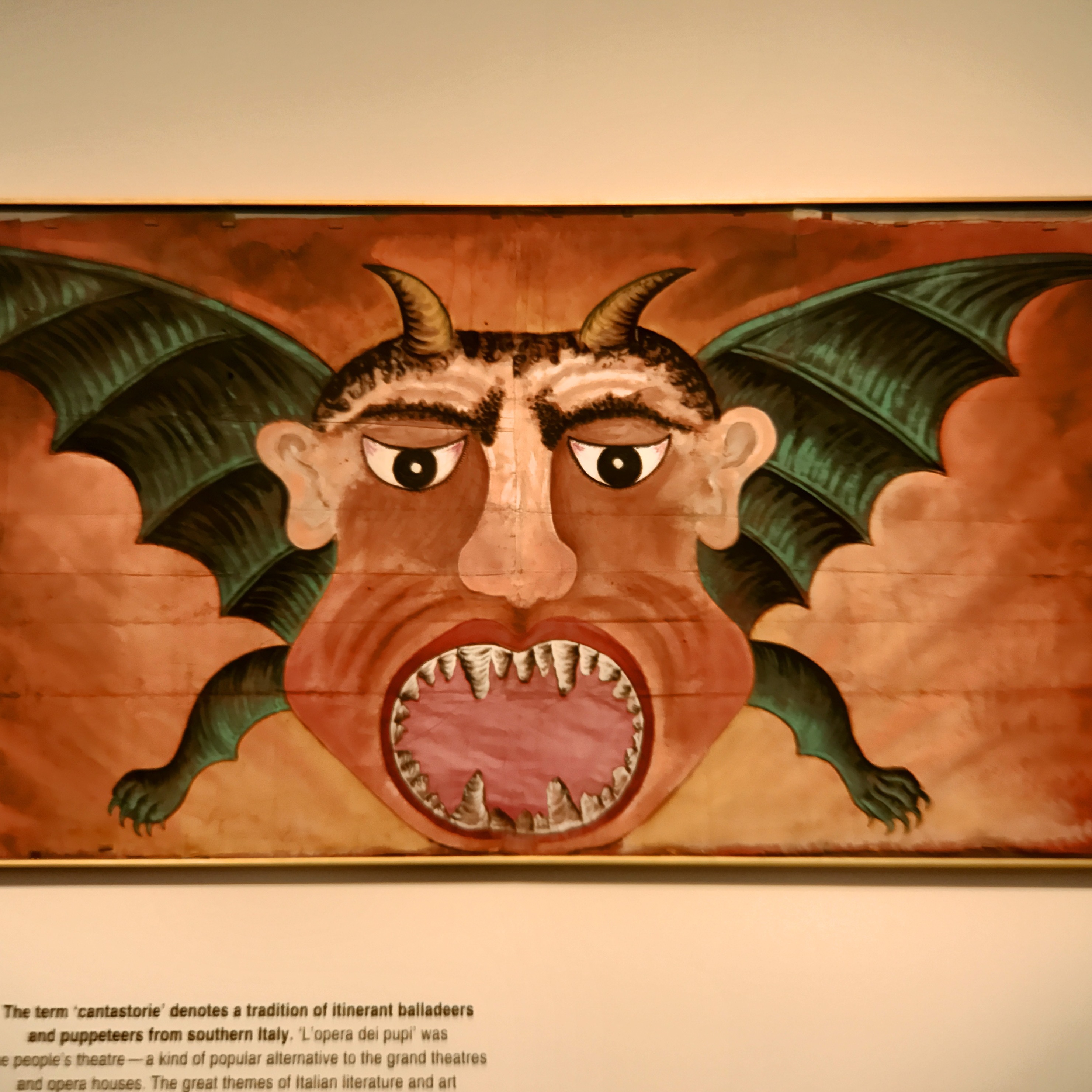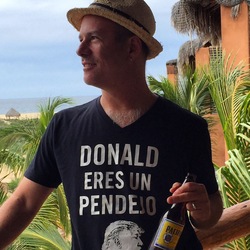Cooperative Winery Of Nemea
Cantina Santadi
Terre Brune Carignano del Sulcis Superiore Carignane 2004

Gaia (Gaia's Estate)
S Agiorgitiko & Syrah 2013
Bouquet of coffee, great complexity of berries and earth and tannins. Time for another case. — 8 years ago
Estate Papaioannou
Nemea Pinot Noir 2015
Long time no Greek. Pinot full of body and soul. Way more body and pleasure on the tongue than expected. Obviously, spectacular with red meat but also to cheese and olives. — 9 years ago
Producteurs Plaimont
Le Faîte Blanc Côtes de Saint-Mont Arrufiac Blend 2013
Exuberant and full bodied blend of local Gros Manseng and other indigenous varieties from the much lesser-known South West of France. Forget all those CH's and SB's and submerge into the unknown! Dense-rich-textural, fresh, complex and aromatic.
It has what is probably the most engaging and surprising wine label I have come across.
A part of the exciting portfolio of Producteurs Plaimont, the biggest and most successful cooperative of the area.
#stmont #saintmont #grosmanseng #petitmanseng #petitcourbu #southwest #gascogne #gauls #dancingaboutwine — 9 years ago
Domaine Huet
Le Haut-Lieu Demi-Sec Vouvray Chenin Blanc 2014
Wonderful pear, honey and apple blossom notes. Initial sweet fruit approach with a cooperative acidity that glides the flavors across your palette.
Bright green apple intertwines easily with hits of orange/lime zest and candied melon.
Really fun wine! — 10 years ago
Skouras
Salto Wild Yeast Moscofilero 2014
Wild yeast! Unexpectedly instead of a Minotaur in a bottle we were warmly greeted by one of the most pleasant Moscofilero wines we've ever tasted. Pleasant and well rounded presentation of light body dry wine with apple and citrus free from any oak or yeast that we could notice. — 10 years ago
Cooperative Garriguella
Gerisena Selecció 2013
Cabernet, Merlot, and Garnatxa. Nice blend of Guillem's grapes and a tasty wine with strong cheeses and Iberico ham. And steak. And pork. But not chicken. — 11 years ago
Co-Op Explorers Vineyard
Sauvignon Blanc 2011
One of my favourites from The Cooperative. £6.99 reduced from £8.49 for a limited period. Highly quaffable! — 13 years ago
Tsantali
Nemea Agiorgitiko 2015
One of the most popular Greek wines. Dry and soft flavour. — 8 years ago
Avantis
Ayios Chronos Nemea 2013
Not very dry, A tiny bit of acidity. Dark flavor — 8 years ago
Grand Listrac Cave Cooperative
Listrac-Médoc
We are drinking a circa 1982. 35 years old! After decanting and letting breath half an hour we stepped into the world of this Bordeaux. The bottle wasn't full. The cork was extremely rotted. First impression, incredibly creamy, jammy and multiple generation of tastes. Soft tannins and long lasting. Earthy and woody. Absolutely shocking how complex this is. It's what makes you fall in love with wine. What's makes you comprehend the life of a wine. We also identified a pine resin and wood notes texture while others found it smoky and raisin-flavoured. One of the best wines we've tried. Revisited after an hour. Noticed it became smokier, earthier and leathery. Cloudiness and rusty colour remains. Wow. Wow. — 8 years ago
Produttori del Barbaresco
Riserva Pora Barbaresco Nebbiolo 2009
Wow,confirming the strenght of the cooperative. Still have the Rabaja in the cellar, but the Pora already meets the expectations! — 9 years ago
Tselepos
Agiorgitiko 2013
First of many glasses grilling on the balcony...🍷 — 9 years ago
Skouras
Saint George Nemea Aghiorghitiko 2012
Very nice with pork chops and spicy fries. Not too light, not too heavy. Notes of fruits. — 10 years ago
Cavino
Nemea Agiorgitiko
The Helen of Troy of Greek wines. Elegant, restrained raspberry, pomegranate and caramel. A tasty wine, but it lacked the acidity I would have liked to see for it to be paired with the lamb chops. — 10 years ago
Société Cooperative Castelmaure
La Pompadour Corbières Carignan Blend 2012
Deeply coloured wine. Very nice and elegant after one day of airing. Rich, plummy with fresh damsons fruit. A hint of smoke, zan and crushed stones. Full, ripe with fine tannins. The finish is tight, smooth and fresh. One to try with "Boeuf mode"! — 11 years ago
Harlaftis
Nemea Agiorgitiko Blend 2011
Zin like, with plenty of pretty fruit. Solid at 9.79 — 11 years ago
Utah Brewers Cooperative
Captain Bastard's Oatmeal Stout
#beer. lots of points for the name — 12 years ago
Papantonis Winery
Meden Agan Nemea Agiorgitiko 2010
One of the best Greek reds we have ever had. Sleek and Pinot-like but with great spicy rusticity. — 12 years ago
Domaine Louis Michel
Montmain Chablis 1er Cru Chardonnay 2014
The 14 Chablis are really good. This Louis Michel is no different. An excellent example of little intervention of good fruit. This producer uses no oak; which I really appreciate. After you start to appreciate good Burgundy, CA Chardonnays aren't that interesting. Not that I don't ever drink or enjoy some CA Chardonnay producers, I just prefer the cooler climate Chardonnays that don't use new oak. This 14 was clean through and through. Bright citrus, peach, touch of green apple, soft minerality, touch of saline, creamy texture and beautiful round acidity and ripe, elegant finish. Photos of, Louis Michel vineyard, vineyard heat sources to protect the vine buds during their sometimes difficult Spring weather/frosts, Guillaume Michel (Owner/Winemaker) and their Domaine. Producer notes and history...It was largely believed that Michel family had only been cultivating Chablis since 1850. More on that in a bit. The winery is situated right in the heart of the village with 25 hectares spread over the very first slopes that were discovered by Cistercian monks in the 11th century. 40 years ago, the family decided to stop making the wine in wooden barrels, preferring to create clean, pure and precise Chablis without adding artificial woody tastes. I've said it more than once and I'll say it again, if you have good white grapes, strong wood use only covers up good fruit flavor or hides mistakes either in the vineyard or cellar, baring a stylistic choice. Through this philosophy, combined with the limited yields inspired by organic wine-growing techniques, the Domaine has developed a worldwide reputation for fine wine-making in stainless steel tanks. Today, the Domaine is managed by Jean-Loup Michel and his nephew, Guillaume Michel, who is continuing the family tradition. The importance of their work in the vineyards cannot be overstated. Guillaume Michel is a firm believer in the philosophy that if you do a good job in the vineyard, 90 per cent of the work is done when the grapes arrive at the winery. This statement could not be more true in my opinion. It his grandfather who started the philosophy, Guillaume has only continued it and evolved it with modern changes equipment etc.. It’s a matter of preserving the authenticity of each terroir...working with very pure and clean wines. They understand and like to work differences in terroir. Making it very important to have the same vinification for all the different terroirs. It is important to have an aromatically neutral vinification. Up until recently it was believed that the winemaking history of the family began in 1850, but thanks to Guillaume’s mother and her genealogical pursuits the date has been moved back to at least 1640. Around that time a winemaker from nearby Tonnerre settled in Chablis, marking the beginning of the families venture in Chablis. Domaine Louis Michel covers a total of 25 hectares. A very large part (15 hectares) is the domaine’s premier crus. In addition to that there is two hectares of Petit Chablis vines, six hectares of village Chablis and two hectares of grand crus. Vaudesír is the families biggest grand crus. Vaudesír is interesting because it is actually a valley. One side facing south, very hot, producing concentrated and powerful wines. In Grenouilles, Domaine Louis Michel has half a hectare at the top of the slope. This nine hectare grand cru is just over 7 hectares and is owned by the cooperative La Chablisienne. Vaudesír and Grenouilles are quite similar in terms of soil. Vaudesír has a bit more of clay. Les Clos, their third grand cru, is very rocky. Les Clos is the typical Kimmeridgian soil of Chablis. If you're like me and enjoy your white wine with good clean fruit rather than with oak or too much oak but haven't tried Louis Michel wines, pick up a bottle. I think you'll fall in love with the style and the value as many are under $30.
— 8 years ago
Jacquart
Brut Rosé Champagne
A solid go-to for rosé champagne. Cooperative made, tart cherry and a hint of toast. — 9 years ago
Papaioannou
Agiorgitiko 2013
Savory notes, cherry and strawberry with a ruby color of a light Sonoma Pinot Noir — 9 years ago
Société Cooperative Castelmaure
Cuvée No. 3 Corbières Syrah Blend
Smells beautiful! Tastes of black licorice and blackberry. Really deep body, dry tannins, and a bit of spice. #vinebox — 10 years ago
Robola Wine Producers Cooperative
San Gerasimo Robola Cooperative of Cephalonia 2012
Petrol and stone fruit on the nose with an oily texture and phenolics. Delicious glass of wine — 11 years ago
Cave des Vignerons de Castelmaure
Castelmaure Corbières Grenache Blend 2013
A solid and deep Corbieres from the small and unique cooperative of Castelmaure. Earthy, herby with scents of warm bush, thyme and dry leaves. Dried figs and spices complete the picture and add character. Full-bodied, rich and deep on the palate with fine and ripe tannins. medium acidity. A wine for food. — 11 years ago
L'Olivera
Vallisbona 89 Costers del Segre Chardonnay-Macabeo Blend
We'll see if Delectable can figure out the name of this wine - I had to create it on CellarTracker. Made by a social interest cooperative in Costers del Segre, just west of Barcelona, this blend of Cava grapes (Chardonnay + Macabeo) is focused and beautiful. A swirling array of flavours, largely not fruit-based -- talcum, buttered popcorn, rubber, varnish, baked pear, cinnamon, mineral, celery -- yes, I swear, all in the same wine -- then scorching straight-line acidity on the back end of the palate that carries the wine through into a long, herbal-tinged finish. Somehow takes an intense approach to a fairly neutral set of flavours. Stunning. — 12 years ago




















James Forsyth
Our next bottle during our delicious dinner at Scampi is a 2004 Carignane from Santadi in Sardinia, which is utterly appropriate given we are in a Southern Italian restaurant. Santadi is a cooperative that has many of the best vineyard sites in Sardinia and takes meticulous care to make the best wines from those sites. Produttori del Barbaresco in Piedmont and CVNE in Rioja are two such peers in this regard, such is my understanding, which may be limited.
The Carignane del Sulcis Superiore Terre Brune from 2004 was a wonder with the cuisine. The wine is at once powerful with plums and cherries, and graceful with a lovely silky texture. This is reference point Sardinian quality. I'd like to try more. — 8 years ago